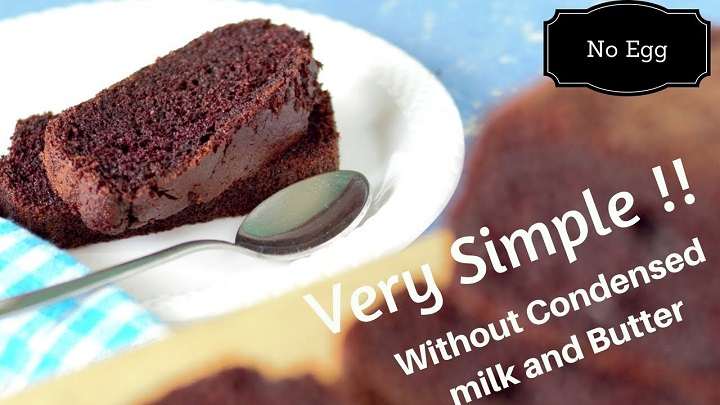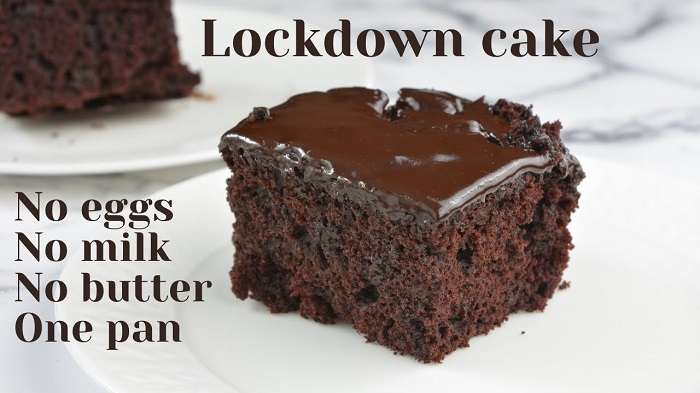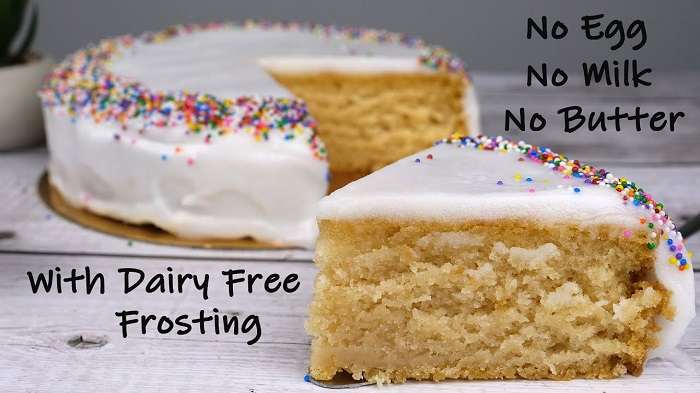Why Bake Without Eggs, Milk, or Butter?
Before we dive into the actual recipe and techniques, let’s briefly discuss why someone might want to bake without these traditional ingredients. There are several reasons:
- Dietary restrictions: Vegans avoid animal products, including eggs, milk, and butter. Additionally, many people have allergies or intolerances to eggs and dairy.
- Health reasons: Eggs, milk, and butter are high in fat and cholesterol. Substituting them can lead to a healthier cake.
- Running out of ingredients: Sometimes, you simply don’t have eggs, milk, or butter on hand, but you still crave a homemade cake.
- Curiosity and creativity: Some people enjoy the challenge of creating desserts without conventional ingredients, experimenting with alternatives to traditional baking.
Now that we’ve established why you might want to make an egg-free, dairy-free, and butter-free cake, let’s jump into how it’s done.
Understanding the Role of Eggs, Milk, and Butter in Baking
Understanding the function of these ingredients helps us find effective substitutes. Here’s what they do in a cake recipe:
- Eggs: Eggs act as a binder, providing structure and helping the cake rise. They also contribute to the cake’s moisture.
- Milk: Milk adds moisture to the cake, ensuring it’s not dry, and enhances the texture by softening the gluten.
- Butter: Butter adds richness and flavor, and contributes to the tenderness of the cake.
Knowing their functions helps in selecting the right replacements that will ensure your cake retains its desired characteristics.
Ingredients You Can Use Instead of Eggs, Milk, and Butter
There are many plant-based ingredients that can effectively replace eggs, milk, and butter. Here’s a breakdown of the best options:
1. Egg Substitutes
Several ingredients can replace eggs in cakes, depending on the role you need them to play. Here are some options:
- Applesauce: Unsweetened applesauce is a great egg substitute. It adds moisture and sweetness, making it perfect for dense cakes. Use ¼ cup applesauce for each egg.
- Banana: Mashed bananas work similarly to applesauce, adding moisture and a mild flavor. However, they can slightly alter the flavor of your cake, making it more banana-forward. Use ¼ cup mashed banana for each egg.
- Flaxseed or Chia Seeds: Flax and chia seeds, when mixed with water, create a gel-like consistency that mimics the binding properties of eggs. For one egg replacement, mix 1 tablespoon of ground flax or chia seeds with 3 tablespoons of water and let it sit for 10 minutes.
- Vinegar and Baking Soda: This combination helps cakes rise without eggs. The vinegar reacts with the baking soda to create a fluffy texture. Use 1 tablespoon vinegar and 1 teaspoon baking soda to replace one egg.
- Silken Tofu: Tofu is excellent for adding moisture and structure to cakes. Use ¼ cup of blended silken tofu for each egg.
2. Milk Substitutes
There are plenty of non-dairy milk options available that work well in cakes:
- Almond Milk: A popular choice for its neutral flavor, almond milk works great in place of dairy milk.
- Soy Milk: Soy milk is another versatile option that closely resembles cow’s milk in terms of protein content.
- Coconut Milk: For a richer, more decadent cake, coconut milk adds both moisture and a subtle coconut flavor.
- Oat Milk: Creamy and mildly sweet, oat milk is perfect for cakes that require a softer texture.
- Rice Milk: A bit thinner than other milk substitutes, rice milk is great for light cakes.
3. Butter Substitutes
To replace butter, you’ll want ingredients that mimic its moisture and richness:
- Vegetable Oil: One of the simplest substitutions for butter, vegetable oil adds moisture and richness. Use the same amount of oil as you would butter (in terms of volume).
- Coconut Oil: Coconut oil, in its melted form, works beautifully in cakes, especially if you’re aiming for a subtle coconut undertone.
- Margarine: Many dairy-free margarines are available that can replace butter 1:1 in cake recipes.
- Applesauce: Unsweetened applesauce can also replace butter in some cakes, though it makes the texture a little denser. Replace half or all of the butter with applesauce, depending on the result you want.
- Nut Butter: Peanut butter, almond butter, or cashew butter can add richness to cakes, though they may influence the flavor.
Step-by-Step Recipe: Egg-Free, Dairy-Free, Butter-Free Vanilla Cake
Now that we have our substitutes ready, let’s bake a simple yet delightful vanilla cake without eggs, milk, or butter. Here’s a basic recipe that you can modify according to your flavor preferences.
Ingredients:
- 1 ½ cups all-purpose flour
- 1 cup granulated sugar
- 1 teaspoon baking soda
- ½ teaspoon salt
- 1 tablespoon apple cider vinegar
- 1 teaspoon vanilla extract
- 5 tablespoons vegetable oil (or coconut oil)
- 1 cup almond milk (or any non-dairy milk)
Instructions:
1. Preheat the Oven
Preheat your oven to 350°F (175°C). Grease an 8-inch round cake pan or line it with parchment paper to prevent sticking.
2. Mix Dry Ingredients
In a large mixing bowl, whisk together the flour, sugar, baking soda, and salt. These dry ingredients provide the base for the cake.
3. Combine Wet Ingredients
In a separate bowl, mix the almond milk, vinegar, vanilla extract, and oil. The vinegar will react with the baking soda to help the cake rise, while the oil adds moisture.
4. Blend Wet and Dry Ingredients
Slowly pour the wet ingredients into the dry mixture. Stir gently with a whisk or spatula until combined. Be careful not to over-mix, as that can make the cake dense.
5. Pour and Bake
Pour the batter into the prepared cake pan and smooth the top with a spatula. Bake in the preheated oven for 30-35 minutes, or until a toothpick inserted into the center comes out clean.
6. Cool and Serve
Let the cake cool in the pan for 10 minutes before transferring it to a wire rack to cool completely. Once cooled, frost the cake with your favorite vegan frosting or dust with powdered sugar.
Optional Variations:
- Chocolate Cake: Add 1/3 cup of cocoa powder to the dry ingredients and reduce the flour by the same amount.
- Lemon Cake: Add 2 tablespoons of lemon zest and 2 tablespoons of lemon juice for a zesty twist.
- Spice Cake: Add 1 teaspoon of cinnamon, ½ teaspoon of nutmeg, and a pinch of cloves for a warm, spiced flavor.
Frosting Ideas for Egg-Free, Dairy-Free, Butter-Free Cakes
No cake is complete without frosting! Here are some vegan frosting ideas to complement your cake:
- Coconut Cream Frosting: Refrigerate a can of coconut milk overnight, scoop out the solid cream, and whip it with powdered sugar and vanilla extract for a fluffy frosting.
- Avocado Chocolate Frosting: Blend ripe avocados with cocoa powder, powdered sugar, and vanilla extract for a rich, fudgy frosting.
- Cashew Cream Frosting: Soak cashews, blend them with maple syrup and vanilla, and use this as a creamy, dairy-free frosting.
- Peanut Butter Frosting: Mix peanut butter, powdered sugar, and a bit of almond milk for a nutty, creamy topping.
Tips for Success in Egg-Free, Dairy-Free, and Butter-Free Baking
- Don’t Overmix: Overmixing the batter can lead to a dense cake. Mix just until the ingredients are combined.
- Use Fresh Ingredients: Ensure your baking soda and vinegar are fresh to help the cake rise properly.
- Monitor Baking Time: Egg-free cakes can sometimes bake faster than traditional cakes. Keep an eye on the cake to avoid overbaking.
- Test for Doneness: Insert a toothpick into the center of the cake. If it comes out clean or with a few moist crumbs, the cake is done.
Related Post:
Swampy Area in the Southern US: An In-Depth Look
Life as a Sociopath: Insights from The Wall Street Journal
New England Revolution vs Club América Lineups: A Comprehensive Analysis
Baking a cake without eggs, milk, and butter doesn’t mean sacrificing flavor, texture, or enjoyment. With the right substitutions, you can create a cake that’s just as moist, fluffy, and delicious as any traditional recipe. Whether you’re vegan, have dietary restrictions, or are simply looking for a healthier dessert option, these methods allow you to bake creatively and inclusively. So, next time you’re in the mood for a cake, try out this recipe—you won’t even miss the eggs, milk, or butter!




